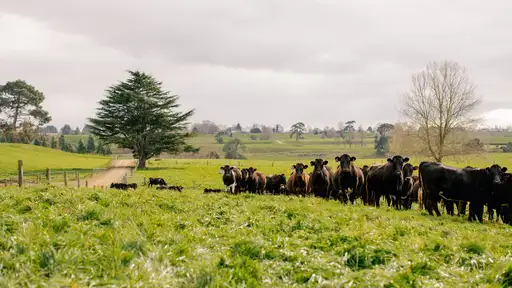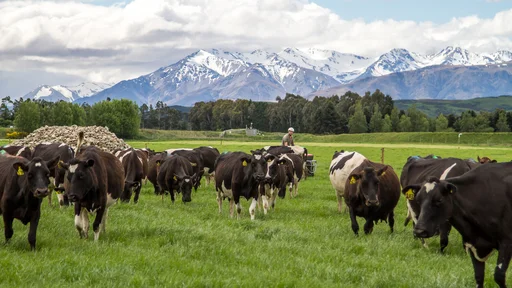The result is lower Average Pasture Cover (APC)
than planned for. Cows have been stood
off a lot which means some cows are not in ideal condition.
So what can be done to manage your way through?
Hold tight to your rotation plan
It is vital that you are not tempted to use more area in a week than your spring rotation planner (SRP) allows. In wet weather stand the late calvers off on the yard or select sacrifice paddocks that can be cropped in spring. Springers can be moved on to a new break in really wet afternoons/nights to keep them full and content. The next day you should cut their next break back if possible.
The old saying of ‘grass grows grass’ is true. If you let your APC to drop below 1,800, then you are lowering how much leaf is intercepting light. The result is that going below 1,800 will mean your growth rates will be slower than at 2,000 APC.
Ultimately you want to end up at your target APC soon after balance date. For a farm stocked at 3 cows to the hectare and on a 21 day round length this will be about 2,100 APC – so that is your target APC to be aiming for.
The goal through August and September is to steadily feed your cows better each week to provide a rising plane of nutrition. You don’t want to build cows up too soon if you know you are likely to run short of grass or supplements, and then have to cut cows intakes back suddenly.
Feeding supplements
Different farms have different abilities to store and feed supplements. Feeding supplements can allow you to hold on the correct areas each day and week and ensure that milkers are grazing no lower than 1,500.
Supplements need to be purchased based on the cost being fed out at 5% of payout, so about 30-32 cents per kg dry matter (DM). There are options out there currently below this cost. Think carefully how to reduce wastage in storage and when feeding out.
Once a day milking (OAD)
OAD milking can be a good way to reduce pasture demand, but this is not immediate. Cows take 4-6 weeks of being milked on OAD in spring to reduce their intake levels. So you may not reduce your pasture demand, but you slow the rate at which cows lose weight. Cows at mating need to be ideally 4.0+ BCS and in a positive energy balance.
There are some relatively small milk losses to be expected on OAD, especially going past the first three weeks on OAD. One tactic can be to milk the first three weeks of calving cows on OAD, and then put these onto TAD, while starting the next three weeks of calving cows on OAD for their first three weeks, then onto TAD. After that time, reassess and decide if the first calvers and lightest R3s should stay on OAD.
Milking all your colostrums on OAD provides extra valuable time and reduces metabolic issues as well. Just milk your newly calved cows as soon as possible after calving, then again the next morning with all current colostrums. This will reduce mastitis cases.
Pro-Gibb
This can be used successfully through August and September to bring later pasture growth forward to when the real deficit exists. The cost works out at about 20 cents per additional DM grown (assuming a contractor applies the product). Best to apply behind the cows 3-5 days post-grazing. Do one full round and then stop. Don’t use ProGibb instead of nitrogen (N). These two products used together are cumulative.
Nitrogen
Soil temperatures through August and September will be well above 8oC, so nitrogen (N) should be used behind the cows. If you are really short and it has been two months since the farm had any N, you can do three-quarters of the farm in one hit, and then follow the cows.
Take time to assess where you are pasture-wise and work out a plan to overcome the deficit that suits your own farm.
Darren Sutton
FarmWise consultant




